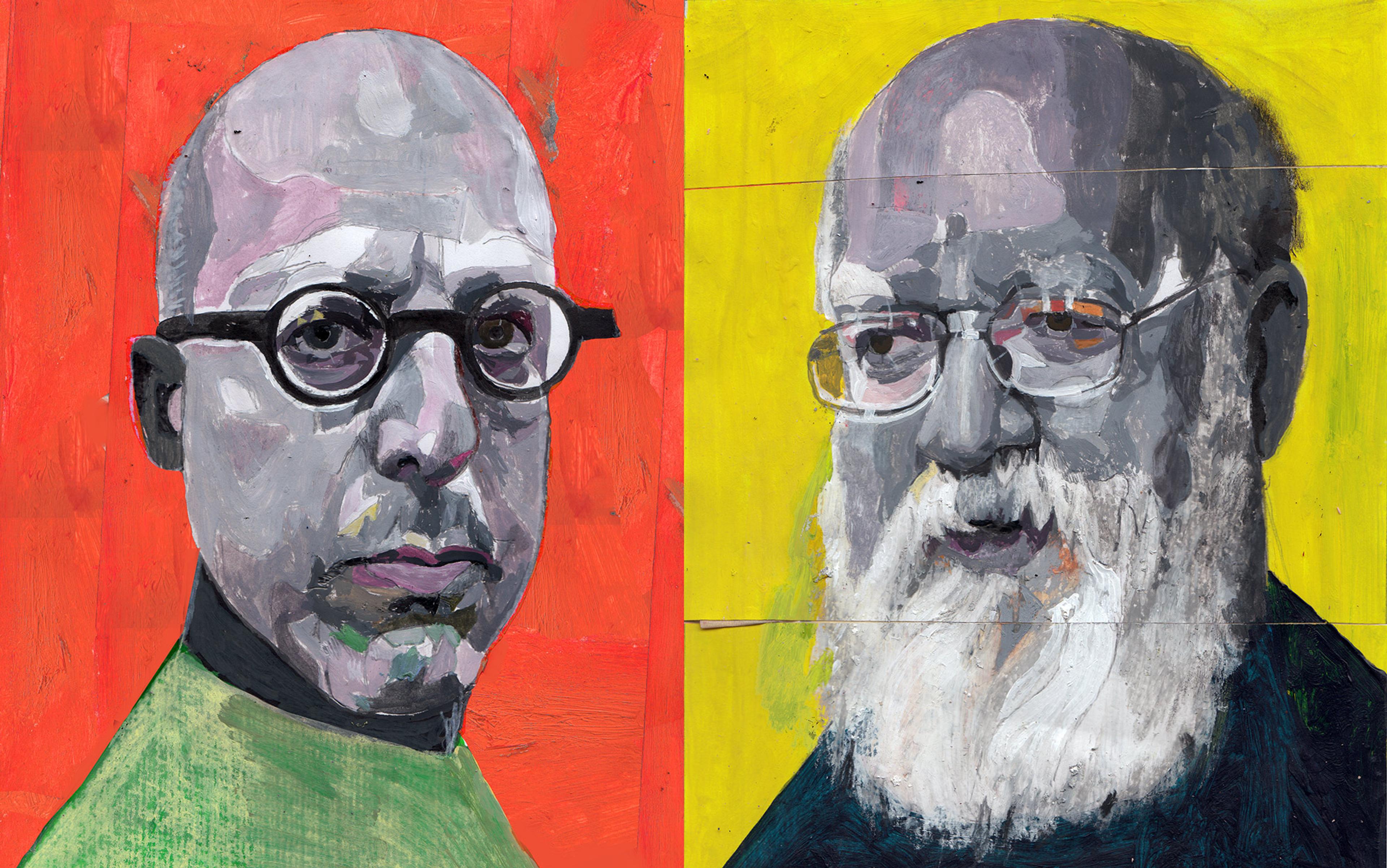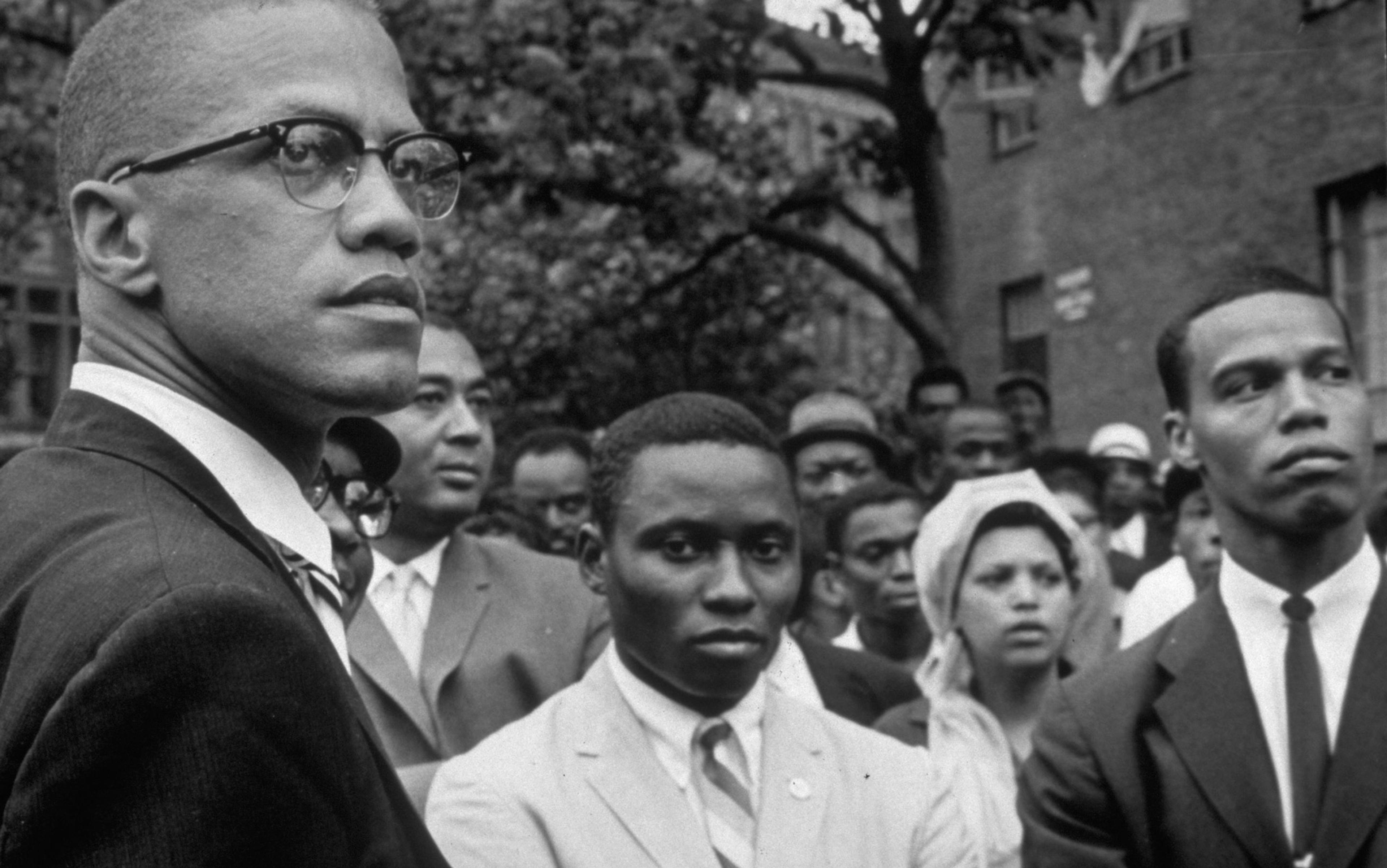Sheilah Miller (a fictional character, though representative of a widespread phenomenon) is a 39-year-old Black woman who was admitted to the hospital to give birth to her child. But there were complications. Hours later, she had lost a lot of blood and suffered a debilitating stroke. Her physician, Dr Smith (likewise, fictional but representative), a white man, repeatedly ignored her complaints of pain and discomfort due to his prejudice against her identity. The baby lived but Ms Miller was paralysed from the neck down. As a patient, she had knowledge to share about her pain, her discomfort, her suffering. But, for more than 10 hours, Dr Smith refused to consider her knowledge due to his bigotry.
Ms Miller suffered enormously as a result of Dr Smith’s medical malpractice. She was harmed financially with medical expenses from her hospitalisation, and lost wages due to time away from work. Her physical harm, paralysis, is obvious, and her emotional harm may manifest itself as anxiety or depression or other emotional maladies. But there is another kind of harm she suffered: epistemic. Epistemic harm, while real, is not widely known.
The term ‘epistemic’ is derived from the Ancient Greek word episteme, meaning knowledge. Knowledge, and especially seeking and giving knowledge, is essential to being human, as essential as breathing and loving. As profoundly social creatures, humans are givers of knowledge but, according to the philosopher Miranda Fricker in her groundbreaking book Epistemic Injustice (2007), epistemic harm prevents, denies and rejects that. If our ability to give knowledge is rejected, then so is our humanness and our dignity. To be harmed epistemically is to be humiliated and degraded as a human being; it is to be treated not as a someone but as a something. People don’t need to listen to things or regard them with respect or credibility. As the philosopher Pamela Ann Boongaling put it in 2022:
Suppose, for example, that we deny someone the right to be heard or the right to explain their position on an important issue based on a prejudice that we have regarding the social group that the person belongs to. By denying them that right, we would have, in effect, denied them as well of an essential part of their own humanity. After all, other things being equal, human beings possess rationality and autonomy, and these characteristics are constitutive of what it means to be a human being. Thus, an injustice of this kind cuts deeply since it affects the very core of what it means to be a human being.
A victim of epistemic harm is not regarded as a rational human being but as an infant or an animal or a piece of furniture.
A great injustice of the United States’ legal system is that it will allow Ms Miller to be compensated for her financial, physical and emotional harm but not her epistemic harm. Think about that: Ms Miller suffered serious epistemic harm and yet cannot be compensated for it, even though all (or almost all) of the other harms flowed from her original epistemic harm. Her attempt to give her knowledge was rejected and ignored for 10 hours. Imagine how frustrated and scared she must have felt – hours of pleading and yet being ignored by Dr Smith as one unworthy of care or credibility. At some point, Ms Miller may have started to doubt herself and her objectivity and reasoning. She might have thought: ‘Maybe I’m not in pain – after all, he’s the expert,’ or ‘Maybe I’m just being irrational or emotional.’
If Ms Miller did not suffer epistemic harm, she likely would not have suffered the other harms. Fix the epistemic harm, and the other harms likely never arise. If she is to be made whole, she needs to have a legal remedy for her epistemic harm.
How prevalent is serious epistemic harm resulting from bigotry? We don’t know precisely, but two recent empirical studies show that Black patients are more likely than white patients to suffer epistemic harm. Mary Catherine Beach and co-authors found that physicians discredited Black patients’ assertions more frequently than white patients’, concerning their pain levels. This is similar to what happened to Ms Miller; she expressed the severe pain she was suffering but her doctor ignored her. In another study, Kelly M Hoffman and co-authors concluded that some medical personnel have ‘false and fantastical’ beliefs about Black patients as compared with white patients, including such appallingly racist beliefs as that ‘Black people’s skin is thicker than white people’s.’ As a result, Black patients are expected to endure pain that white patients are not expected to tolerate. Dr Smith might have assumed that, as a Black patient, Ms Miller was just tougher and could endure more pain.
In common law jurisdictions (like in the US and Great Britain), victims of civil wrongs can bring tort claims against their transgressors and seek monetary redress for wrongs. The US tort legal system purports to compensate victims for each type of harm they suffer (assuming certain legal standards are met like the burden of proof, timely bringing of claims, and the like). Damages are intended to make the victims whole (trying to return them to the status quo ante). In Ms Miller’s case, if she lost $100 in wages due to Dr Smith’s negligence, she could recover as damages the $100 she lost. For physical and emotional harm, the system approximates her damages with the intent to make her whole. Ms Miller’s legal complaint would have Claim I (for physical harm), Claim II (for emotional harm) and Claim III (for financial harm). But it could not have Claim IV (for epistemic harm) because epistemic harm is not legally cognisable. As I learned on my first day of law school: a right without a remedy is no right at all. Failure to compensate her for epistemic harm means that she has been injured but is not being made whole.
Various injustices can produce epistemic harm but often it results from ‘testimonial injustice’, a term coined by Fricker. Epistemic harm is inherent in testimonial injustice – it occurs in every case. In Ms Miller’s case, her epistemic harm resulted from Dr Smith’s testimonial injustice, which has three elements:
- Negative identity prejudice: the hearer (someone like Dr Smith) is bigoted against the speaker (someone like Ms Miller). (Identity prejudice can be negative or positive but testimonial injustice focuses mostly on negative identity prejudice.)
- Unjustified credibility deficit: the hearer unjustifiably gives the speaker less credibility than the speaker is due because of the hearer’s negative identity prejudice against the speaker.
- Epistemic harm: the speaker suffers epistemic harm from the unjustified credibility deficit.
Dr Smith’s negative identity prejudice against Ms Miller produced an unjustified credibility deficit. He should have listened to her complaints. Because he did not, Ms Miller suffered from Dr Smith’s testimonial injustice and experienced epistemic harm. Negative identity prejudice is what it sounds like: the hearer is bigoted or negatively prejudiced against some aspect of the speaker’s identity. The prejudice is based upon the speaker’s identity characteristics that are (more or less) permanent, characteristics that track the speaker through her life, such as race, gender, disability, ethnicity, accent and a panoply of other attributes.
Judges have inherent legal authority to recognise new remedies for civil wrongs
Unjustified credibility deficit occurs when the hearer does not afford the speaker the credibility she would otherwise be due. In other words, there is a gap between the credibility that the speaker is owed and what the speaker is actually afforded due to negative identity prejudice. When Ms Miller repeatedly told Dr Smith that she was in a lot of pain, he might have thought she was lying or was an incompetent judge of her pain. But it is unlikely she lied for 10 hours, and even more unlikely she was not competent to judge her own pain. His negative identity prejudice – perhaps unconsciously – kept him from believing her.
Epistemic harm is different from emotional harm. The latter may result in PTSDs (post-traumatic stress disorders) or severe anxiety or depression or other debilitating emotional conditions. An epistemic-harm victim is prevented from giving her knowledge because the aggressor epistemically objectifies her. Objectification includes denying the victim’s autonomy and denying the victim’s subjectivity. Dr Smith might be denying Ms Miller’s autonomy, meaning she lacks self-determination and should be treated as a child or an incompetent person. Alternatively, Dr Smith might be treating her not as a rational subject but as an object like furniture, ie, one whose feelings and experiences need not be accounted for.
Tort claims can be created legally by legislatures and by courts. I will focus on courts. Judges have inherent legal authority to recognise new remedies for civil wrongs. As society changes, and the types of wrongs change, courts can recognise and then remedy the wrongs. This happens gradually. The law is conservative; it takes its cues from culture and society and, as appropriate, fashions remedies responsive to society’s demands. In broad patterns, the path involves naming, dissemination and acceptance. Naming a thing allows people to identify it and therefore focus on it. As Plato writes in Cratylus, naming a thing can be instrumental to understanding the thing named. Dissemination involves a broader societal understanding of the thing.
The case of #MeToo is instructive. Named in 2006, it did not have societal dissemination until 2017 when the actress Alyssa Milano Tweeted #MeToo, acknowledging she had been sexually harassed and assaulted. After that, the Tweet went viral and millions of people used the hashtag, sharing their own experiences of sexual harassment and assault. The sheer number of women sharing their stories profoundly altered the social landscape and, despite some immediate pushback, society started to accept that sexual abusers could not be tolerated any longer.
Acceptance comes in two forms: societal acceptance and legal acceptance. Societal acceptance almost always precedes legal acceptance. When societal acceptance occurs, the intent is for the thing named to be preserved and enhanced (in the case of a societal good), or to be rejected and diminished (in the case of a societal harm). Legal acceptance is when the thing named has a legally cognisable status. In the case of #MeToo, society is still working through what legal acceptance means.
Two tort claims – privacy rights and emotional distress – have followed this route of naming, dissemination and acceptance, and epistemic harm claims could too. Around the year 1900, courts and plaintiffs in the US recognised that the technology of photographic images could invade one’s private life, but a direct remedy for this privacy invasion did not exist. Society wanted privacy protected and courts fashioned a remedy for this wrong, relying in part on Samuel Warren and Louis Brandeis’s seminal legal article, ‘The Right to Privacy’ (1890). Prior to publication, there was not a name for privacy rights but, afterwards, it was named and identified. Once named, it became easier to protect. In 1905, one of the first reported privacy rights cases was successful in the US.
Legal remedies for emotional distress took a more circuitous path. Although emotional distress claims are rooted in the ancient tort for outrage, courts were cautious in recognising emotional distress claims. Judges were sceptical, thinking emotional distress claims could be too speculative or frivolous. At first, judges allowed emotional distress claims only if they were based upon the aggressor’s intentional conduct or if they were tied to physical injury to the victim (or a close bystander). Later, these guardrails were relaxed or even abandoned in some jurisdictions as courts became comfortable with emotional distress claims. The courts allowed claims based upon the aggressor’s negligence. These are called NIED (or ‘negligent infliction of emotional distress’) claims. In addition, the courts allowed standalone claims, meaning the claims were tied to emotional distress only and did not require physical injury.
The concepts of testimonial injustice and epistemic harm need their #MeToo moment
The ‘naming’ moment came in 1980 when the American Psychiatric Association updated the third edition of the Diagnostic and Statistical Manual of Mental Disorders (DSM-III) to recognise PTSDs. Recognition by the DSM-III meant there was ‘[g]reater rigor in diagnosing emotional harm’, according to the commentary to the Restatement (Third) of Torts. Courts then had an independent assessment of emotional harms, as recognised by the psychiatry profession. As society understood the dangers from PTSD and other emotional harms, it demanded victims be compensated and wrongdoers be held liable. As an example of a standalone NIED claim, a mother sued her doctor for malpractice when her baby died after his umbilical cord was wrapped around his neck, causing deprivation of oxygen during his birth. The Supreme Court of California in 1992 allowed the mother to seek damages for her emotional anguish even though she was not herself physically injured.
Legal acceptance of epistemic harm claims could follow the same path as claims for privacy violations and emotional distress. Epistemic harm claims today are somewhere between naming and dissemination, but not quite at broad societal acceptance. The concepts of testimonial injustice and epistemic harm are fairly well known in academic circles, but they need greater dissemination to the general public. They need, in other words, their #MeToo moment. If that ever comes, epistemic harm might find social and ultimately legal acceptance but the process could take decades from naming to the first successful legal case (privacy rights claims took 15 years, and standalone NIED claims took 12 years).
Epistemic harm claims, if and when legally recognised, could parallel NIED claims because the types of injury claimed are adjacent (epistemic vs emotional), and both would be negligence claims, whose elements are familiar to courts. In a civil tort lawsuit, to prove a defendant is liable for a NIED claim, a victim must prove the following elements by a preponderance of evidence: the defendant was negligent; the victim suffered ‘serious emotional distress’; and the defendant’s negligence caused victims’ serious emotional distress. A similar process could well hold for epistemic harm. Of course, courts may become concerned about victims bringing meritless and frivolous claims for epistemic harm and, as such, might impose guardrails such as tying epistemic harm to victims’ physical injury. Ms Miller’s would be a good test case because physical harm resulted from her epistemic harm. Courts could later decide whether to allow standalone epistemic harm cases.
All negligence claims are predicated on defendants having a legal duty to certain persons to exercise reasonable care. The legal term ‘duty’ has a specific meaning in negligence torts, and is different from the philosophical term. Philosophers often think of duties as derived from natural rights or epistemic principles and as being imposed uniformly on everyone. Legal duties, however, are not imposed uniformly on all persons but apply only to limited persons, and are imposed solely by statute or contract and from common law relationships like the duties parents owe minor children, attorneys owe clients and doctors owe patients. Legal liability for negligence is imposed only on a person who has a legal duty to another person. ‘Negligence in the air’ (that is, negligence to the general populace, without a corresponding duty) is not a legally cognisable concept.
Applying the proposed epistemic harm elements to Ms Miller’s case shows that Dr Smith negligently caused her epistemic harm. Dr Smith, as a physician, had a legal duty to exercise reasonable care in his medical treatment of his patient, Ms Miller. That duty is implicit in the physician-patient relationship and is likely made explicit by various applicable statutes and contracts. Dr Smith was negligent: he had a negative identity prejudice against Ms Miller that produced an unjustified credibility deficit. Dr Smith did not believe Ms Miller and, in fact, he did not even listen to her, in breach of his duty of reasonable care. Ms Miller would be entitled to monetary damages from Dr Smith for any serious epistemic harm she suffered. Thus, she could add Claim IV (epistemic harm) to her legal complaint.
The doctor’s notes would be produced if they included incriminatory or exculpatory language
Unjustified credibility deficit may be the most difficult legal element to prove because hearers generally do not have any obligation to afford credibility to speakers. Hearers can listen to speakers, or not; believe them, or not; believe select parts, or not. Legally, hearers don’t have to extend any credibility to anyone unless they have a legal duty to that person. The extent of the credibility that is due varies from situation to situation, and any formulation must be flexible in recognising this. There is not some Platonic ideal providing an algorithm that the speaker is owed, say, 70 units of credibility but received only 30 units, leaving a 40-unit deficit. Rather, it is the legal duty that provides the context for what credibility is due. So a balance must be struck.
How much credibility is the speaker owed and was the speaker’s credibility decreased due to the hearer’s negative identity prejudice against the speaker? Typically, plaintiffs would try to establish an unjustified credibility deficit through testimonial, documentary, expert and other evidence, which is then sifted and weighed by the jury. Ms Miller may be able to adduce her own testimony (‘I told Dr Smith repeatedly I was in pain!’) and perhaps nurses or other staff could corroborate her statements. Expert testimony might be shown allowing the jury to infer that doctors, in general, may have negative identity prejudices or unduly assign credibility deficits to Black patients, citing the aforementioned Beach and Hoffmann studies. The doctor’s notes would be produced if they included incriminatory or exculpatory language. Consider, in the alternative, the following statements from Dr Smith’s hypothetical notes about Ms Miller:
Note 1: ‘Patient’s pain is 8 on a scale of 10.’
Versus
Note 2: ‘Patient claims her pain is 8 on a scale of 10.’
In a lawsuit, Note 1 might be used to assert that Dr Smith knew of Ms Miller’s pain and yet did nothing for it. Note 2 is ambiguous but one reading is Ms Miller ‘claimed’ she was in pain but Dr Smith did not believe her. There is a significant but unfortunate difference between a doctor describing the pain of a Black patient as she ‘is in pain’ and as she ‘claims she’s in pain’, according to a 2024 study by Courtney R Lee and co-authors. The Lee study reviewed clinicians’ notes about their patients and found clinicians were more likely to cast doubt when Black patients said they were in pain, compared with white patients. As one Black patient put it, doctors ‘just don’t believe us.’ In philosophical terms, the clinicians had an unjustified credibility deficit against the Black patients likely due to a negative identity prejudice. Proving an unjustified credibility deficit may be difficult but it should not be insuperable.
Philosophers have named the concept of epistemic harm. Now it is being disseminated into the broader society. Miranda Fricker stated that her goals for exploring testimonial injustice are identifying it, protesting it, and avoiding it. These goals are laudable. To that list, I would add one more goal: remedying it.






